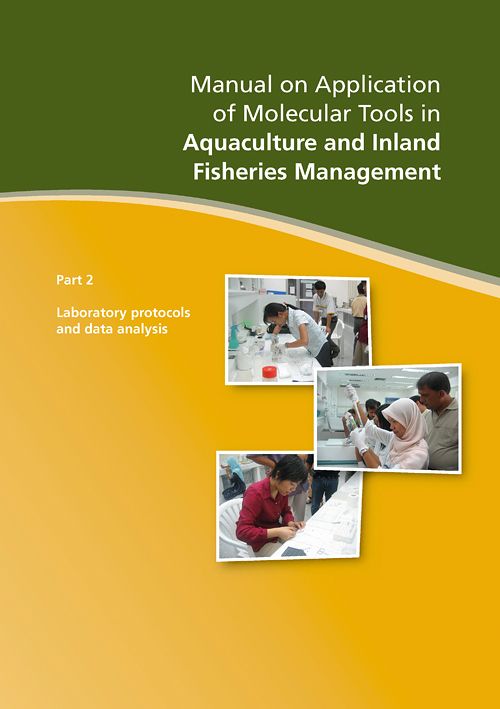Manual on Application of Molecular Tools in Aquaculture and Inland Fisheries Management: Laboratory protocols and data analysis
9 March 2007 | Thuy Nguyen, David Hurwood, Peter Mather, Uthairat Na-Nakorn, Wongpathom Kamonrat and Devin Bartley | 895 Downloads | .pdf | 2.32 MB | Genetics and Biodiversity
This is the second part of the manual Application of molecular genetic techniques in aquaculture and inland fisheries management. The major aim of this part of the manual is to provide step-by-step laboratory protocols and methodologies for data analysis, and a guideline to design a population genetic study.
The scope covers most commonly used techniques for screening genetic variation, general background on the methodologies for estimation of important parameters in population genetic studies for different forms of molecular genetic markers. Part 2 includes three sections:
Section I - Molecular markers - an overview: will provide an overview of common molecular markers used in population genetic studies.
Section II - Laboratory protocols: will provide step-by-step protocols of commonly used molecular genetic techniques.
Section III - Data analysis and project design: will deal with aspects of data management such as data analysis, interpretation and presentation, and a guideline to design a population genetic studies.
Creative Commons Attribution.

